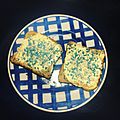Hagelslag facts for kids
Hagelslag is a special type of chocolate sprinkle from the Netherlands. The name means "hail" in Dutch, because the sprinkles look a bit like tiny hailstones. People in the Netherlands traditionally sprinkle these small, sweet chocolate pieces on buttered bread or rusks. They often eat hagelslag for breakfast or lunch.
Hagelslag is a very Dutch food. You won't usually find it in other countries. However, you can buy it in places that used to be Dutch colonies, like Suriname, the former Dutch Antilles, and Indonesia. In these areas, people sometimes use hagelslag to decorate desserts and cakes, not just for sandwiches.
There are different kinds of hagelslag. Besides the classic chocolate sprinkles, there are also hagelslag vlokken. These are chocolate flakes that you also sprinkle on sandwiches. You can find chocolate-flavored hagelslag (chocoladehagelslag) and even fruit-flavored ones (vruchtenhagel).
The history of hagelslag
Hagelslag has a fun history! Records from Amsterdam show that a man named B.E. Dieperink first invented it in 1919. He was the director of a company called VENCO, which made liquorice sweets. VENCO even got a special patent for the name "hagelslag." This meant other companies couldn't use that exact word for their sprinkles.
Because of this, another company called De Ruijter had to be creative. They named their sprinkles based on their flavors, like "vruchtenhagel" (fruit hail). De Ruijter started making sprinkles in many different flavors. They had lemon, raspberry, orange, and even aniseed. This competition made hagelslag even more popular!
Similar sweet sprinkles
Around the world, there are many sweet sprinkles that are like hagelslag. People use these sprinkles to decorate cakes, cookies, desserts, and ice cream. You can find sprinkles almost everywhere!
One fun example is fairy bread from Australia. This is a popular kids' birthday treat. It's simply buttered bread covered in colorful sprinkles.
Sprinkles come in many shapes. Some are shaped like tiny rods, which are common. Others are novelty shapes, and these are sometimes called confetti candy. There are also nonpareils, which are tiny, round sprinkles. In some places, like Australia and New Zealand, nonpareils are called "hundreds and thousands."
In the Netherlands, besides hagelslag, people also enjoy muisjes. These are small anise seeds covered in a sugary shell. They look a bit like tiny mice, which is how they got their name!
See also
 In Spanish: Fideos de chocolate para niños
In Spanish: Fideos de chocolate para niños






